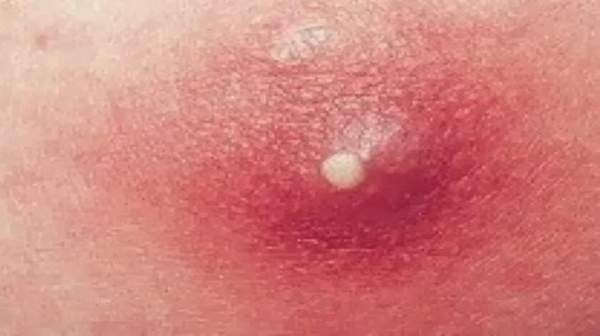What's in this article?
Carbuncles Overview
A carbuncle is a red, swollen, and painful cluster of boils that are connected to each other under the skin. A boil (or furuncle) is an infection of a hair follicle that has a small collection of pus (called an abscess) under the skin. Usually single, a carbuncle is most likely to occur on a hairy area of the body such as the back or nape of the neck. But a carbuncle also can develop in other areas of the body such as the buttocks, thighs, groin, and armpits.
Most carbuncles are caused by Staphylococcus aureus bacteria, which inhabit the skin surface, throat, and nasal passages. These bacteria can cause infection by entering the skin through a hair follicle, small scrape, or puncture, although sometimes there is no obvious point of entry.
Filled with pus a mixture of old and white blood cells, bacteria, and dead skin cells carbuncles must drain before they’re able to heal. Carbuncles are more likely than boils to leave scars.
An active boil or carbuncle is contagious: the infection can spread to other parts of the person’s body or to other people through skin-to-skin contact or the sharing of personal items. So it’s important to practice appropriate self-care measures, like keeping the area clean and covered, until the carbuncle drains and heals.
Carbuncles require medical treatment to prevent or manage complications, promote healing, and minimize scarring. Contact your doctor if you have a boil or boils that have persisted for more than a few days.
Carbuncles Causes
Most carbuncles are caused by the bacteria staphylococcus aureus. The infection is contagious. This means it can spread to other areas of the body or other people.
A carbuncle is made up of several skin boils (furuncles). The infected mass is filled with fluid, pus, and dead tissue. Fluid may drain out of the carbuncle, but sometimes the mass is so deep that it cannot drain on its own.
Carbuncles can develop anywhere. But they are most common on the back and the nape of the neck. Men get carbuncles more often than women.
Because the bacteria that causes the condition is contagious, family members may develop carbuncles at the same time. Often, the cause of a carbuncle cannot be determined.
You are more likely to get a carbuncle if you have:
- Friction from clothing or shaving
- Poor hygiene
- Poor overall health
Persons with diabetes, dermatitis, and weakened immune systems are more likely to develop staph infections that can cause carbuncles.
Carbuncles Symptoms
A carbuncle is a cluster of boils that form a connected area of infection. Carbuncles often occur on the back of the neck, shoulders or thighs. Compared with single boils, carbuncles cause a deeper and more severe infection and are more likely to leave a scar. People who have a carbuncle often feel unwell in general and may experience fever and chills.
Risk Factors for Carbuncles
Older age, obesity, poor hygiene, and poor overall health are associated with carbuncles. Other risk factors for carbuncles include:
- Chronic skin conditions, which damage the skin’s protective barrier
- Diabetes
- Kidney disease
- Liver disease
- Any condition or treatment that weakens the immune system
Carbuncles also can occur in otherwise healthy, fit, younger people, especially those who live together in group settings such as college dorms and share items such as bed linens, towels, or clothing. In addition, people of any age can develop carbuncles from irritations or abrasions to the skin surface caused by tight clothing, shaving, or insect bites, especially in body areas with heavy perspiration.
Carbuncles Treatment
Carbuncles usually must drain before they will heal. This most often occurs on its own in less than 2 weeks.
Placing a warm moist cloth on the carbuncle helps it to drain, which speeds healing. Apply a clean, warm moist cloth several times each day. Never squeeze a boil or try to cut it open at home, because this can spread the infection and make it worse.
You need to seek treatment if the carbuncle lasts longer than 2 weeks, returns frequently, is located on the spine or the middle of the face, or occurs along with a fever or other symptoms. Treatment helps reduce complications related to an infection.
Your doctor may prescribe:
- Antibacterial soaps
- Antibiotics applied to the skin or taken by mouth
Deep or large lesions may need to be drained by a health care provider.
Proper hygiene is very important to prevent the spread of infection.
- Wash your hands thoroughly with soap and warm water after touching a carbuncle.
- Do not re-use or share washcloths or towels. This can cause the infection to spread.
- Clothing, washcloths, towels, and sheets or other items that contact infected areas should be washed in very hot (preferably boiling) water.
- Bandages should be changed often and thrown away in a bag that can be tightly closed.





